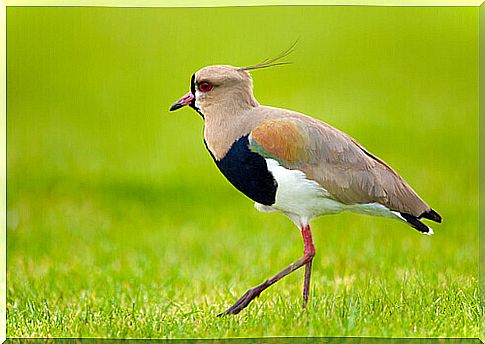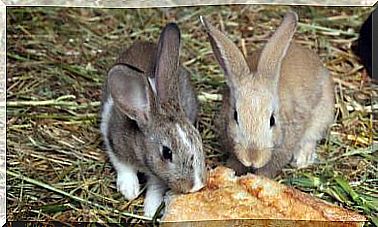Let’s Meet The Tero, A Small South American Bird

Elegant, with delicate and long legs, it is a great defender of its nest and its chicks. So is the Chilean Lapwing, a bird that lives in much of South America. In this article we will give you some information about the Tero, a small animal that fulfills an important function in the control of agricultural plagues.
A bird that populates much of South America
Also known as teru teru, due to the characteristic sound it emits, this bird is very common in the plains of Argentina and Uruguay. It can also be found in the following areas:
- Bolivia
- Brazil
- Chile
- Colombia
- Venezuela
- Paraguay
The Tero lives near lagoons, lakes, rivers, streams or land with low meadows. It could also be present in urban places, and even in the gardens of some houses as a pet, since it is considered an excellent guardian who alerts with its cries for any strange movement, and keeps the place free of insects.
Characteristics of the Tero, a small bird
With the appearance reminiscent of the European lapwing, this bird exhibits the following physical characteristics:

- It is between 30 and 35 cm tall and weighs about 280 grams.
- It has a short red and black beak at the tip.
- Round eyes of an intense red.
- Long and thin legs, also red. It has three fingers in the front and a shorter one in the back.
- It has a gray and beige plumage in the upper part, with some purple hues in the wings, and black and white in the lower part.
- It has a fine black tuft on its head.
- It has spurs under its wings which it uses to intimidate its possible enemies.
A peculiarity of this bird is that it sleeps only on one leg, while keeping the other resting on the body. It also tends to stretch out with its paws backwards.
Learn more about the teru teru
This little lapwing feeds on insects, earthworms, worms and small vertebrates, but also eats raw meat.
His hunting techniques are curious to observe. One of these is to run, stop and peck forward. Another is to dig the soil with the legs, in order to be able to catch the possible prey that are underground.
It is a sedentary animal, and it is common to see it in pairs or in small groups. Since it makes its nests in open fields, in the soil, it takes great care of its eggs and its young. For this reason, he is always on the alert.
If it perceives a threat, it emits its characteristic sound to try to mislead possible predators by “shouting”, flying or brooding away from the place where it actually nestles. It can also fly low to hit intruders with its spurs.
A bird that does not go unnoticed
The Tero has become the symbol of Uruguay’s Rugby team, as well as being the national bird of this country.
It ‘also the protagonist of myths and legends, and is also found in the verses of Martín Fierro , a poem by José Hernández: “Of the evils we suffer much talk about the villagers, but they do like the birds, to hide the nest, shall cry strong on one side and on the other they hold the eggs “.
Naturalist Charles Darwin also mentioned these birds during his travels in South American lands. He said they were very useful to travelers, as it signaled them the presence of possible thieves on the way.
And if you sometimes hear that someone has “Tero paws”, there is no doubt that they are referring to a person with long and delicate legs.
Main image courtesy of “Wikimedia Commons”









